Tranalysis
At the 2022 Beijing Winter Olympics and Winter Paralympics, the ice dunes and snow skins based on pandas and lanterns were charming, attracting enthusiastic pursuit by athletes and audiences from home and abroad; the Fuwa "Tiantuan" in the Beijing Olympics has long become a household name and an eternal classic suitable for all ages. It can be said that the Olympic mascot, which has been born for less than half a century, has increasingly become the most dynamic symbol in Olympic visual design and the most popular focus of this sports event.
What kind of magic does these elves appear on paper have?
We have gone through a century of time under the guidance of the Olympic emblem. As the second chapter of the Olympic Beauty and Centenary Olympic Aesthetic Award, we will follow the return of sea level to Munich in 1972, take a good look at the changes in the mascot image in the Summer Olympics, and see how these "cute things" capture thousands of people's hearts.

Waldie is the first official mascot in the history of the Summer Olympics. He is a dachshund, which is very popular in Bavaria, where Munich belongs, and is known for its endurance, tenacity and agility. The body comes in several different colors: the head and tail are light blue, and the stripes on the body contain at least three of the six Olympic colors.
▲ Waldi at the 1972 Munich Olympics

Amick means "beaver" in Aboriginal Canadian languages. Beavers are closely related to Canada's history, and their fur trade is a major commercial activity in North America. This animal is known for its patience and diligence. It appears on five-cent coins and various stamps. Beavers can also be seen on the uniforms of the Montreal Army. The mascot bears the red stripes of the Montreal Games emblem, representing the ribbon on the championship medal. Another version is paired with a colored ribbon that represents the color of the organizing committee.
▲ Amick at the 1976 Montreal Olympics

His full name is Mikhail Potapich Toptikin, and he wears a colorful belt that symbolizes the Olympic rings. Bears are a household name in Russia and often appear in many popular stories, songs and poems. The organizing committee received about 45,000 letters and identified the bear as the mascot. Among the 60th edition of the mascot patterns shortlisted, the work of famous children's book illustrator Viktor Chizhkov was successfully selected.
▲ 1980 Moscow Olympic Games Misha

Sam is a friendly and cheerful eagle that embodies the optimism of the Olympics without scaring children. His hat is printed with the pattern of the American flag. Before it is determined to become the mascot of the Los Angeles Olympics, there is also the California Bear as an alternative. But because the bear had already been used in the Moscow Olympics, the organizing committee finally chose the eagle, a bird of prey that symbolizes the American nation. Another meaning of its image is to pay tribute to the bronze eagles, which were placed at the finish line in ancient Olympic Games to express welcome to finishing athletes. In addition, a cartoon based on Sam came into being, in which Sam plays the role of a detective and uses the magic of the Olympic rings on his hat to solve various problems.
▲ Sam at the 1984 Los Angeles Olympics

Khodori's "Ho" stands for "tiger" in Korean, while "Dori" usually refers to a small man. The name stood out from 2295 publicly provided alternative names. Tigers frequently appear in popular art and legends in South Korea, often showing positive images of humor, bravery and nobility. Hodori wears the Olympic five-ring necklace. Wearing a traditional Korean hat called Sangmo, the ribbon on the hat is in the shape of an "S" representing the English name of Seoul (now called Seoul). In addition, there is a female version of the mascot called Huo Suni. "Suni" means "girl" in Korean.
▲ 1988 Seoul Olympics Khodori

Kobe comes from the acronym COOB92 for the 1992 Barcelona Olympic Organizing Committee, which can be easily pronounced in most languages. He is a humane three-dimensional Pyrenean coyote with a vivid expression, three hairs and large-size clothing that leave a deep impression on people. The expert jury selected Mariscal's work from the mascot works selected by six designers. The designer also designed patterns representing Spanish art and the fonts used in various competition award certificates for the Olympic opening ceremony. To promote the Barcelona Olympics, the organizing committee produced a cartoon series "The Cobi Troupe" about the adventures of Kobe Bryant and his friends.
▲ Kobe Bryant at the 1992 Barcelona Olympics

Izzy is an unusual mascot who is neither an animal, a person, or an object. As a product of information technology, it is covered in blue and wears sneakers. The Olympic rings appear on different parts of its body. When it first appeared, the mascot had mixed reviews, so it was redesigned by children in Atlanta, adding a mouth, nose, star-patterned eyes and stronger legs, and named it "Izzy" among more than 3300 options proposed by children in 16 countries. In addition, a film about Izzie winning the Olympic rings to participate in the Olympics was also aired in the fall of 1995.
▲ 1996 Atlanta Olympics Izzie

This is the first time in Olympic history that three official mascots have appeared. When soliciting mascot images, the organizing committee clearly required to avoid choosing kangaroo and koala, two well-known Australian specialties. In the end, Matthew Hatton was selected as the main designer of the mascot project based on his platypus pattern. Platypus, kookaburra and anteater are also representative animals of Australia, symbolizing water, air and land respectively. The first two are also symbols of New South Wales, where Sydney is located. The names Sid, Ollie and Milly are abbreviations for Sydney, Olympic and Millennium respectively. At the same time, their color also echoes the color of the Olympic emblem.
▲ 2000 Sydney Olympics Sid, Ollie, Milly

The name of the mascot comes from the two gods on Mount Olympus-the brother "Phavos" is another name for Apollo, the god of light and music; and the sister Athena is the goddess of wisdom and the protector of the city of Athens, jointly symbolizing the connection between ancient Greece and the modern Olympic Games. The organizing committee hopes to reflect the purpose of unity between men and women through equality and brotherhood. Their strange appearance was inspired by the typical bell-shaped doll named "Dai Lala" from the 7th century BC, representing the joy of competition and Olympic values. Phavos wore a blue coat reminiscent of the sea and the color of the Olympic emblem, while Athena wore an orange dress reminiscent of the sun and the Paralympic emblem.
▲ 2004 Athens Olympics Phevos, Athena

Fuwa means "auspicious doll". The names of the five Fuwa come from the homophonic pronunciation of "Beijing welcomes you", and the reduplicated words are more playful. They correspond to five natural elements, and each also represents a color of the Olympic rings, conveying beautiful wishes. The blue Beibei prototype is a carp, representing water, and the wave shape on its head is based on traditional Chinese painting design; Jingjing's prototype is a black and white panda, representing forest and joy; the lotus shape on his head is inspired by Song Dynasty porcelain paintings; Huanhuan is the son of fire, symbolizing sports enthusiasm and the Olympic flame; Yingying's prototype is a Tibetan antelope, representing the vast loess land, implying health, and its shape comes from the decorative elements of western my country; Nini's prototype is Jingyan, which represents the sky, and its design inspiration comes from paper kites. In addition, Jingyan happens to be homophonic with Beijing's ancient name "Yanjing". The Beijing Olympic Organizing Committee invited graphic designers and communication agencies from around the world to design mascots for the Olympics, attracting more than 3000 contestants. In the end, Mr. Han Meilin's work was successfully selected. The 100-episode cartoon series titled "Fuwa Olympic Adventures" was broadcast on more than 100 TV channels across the country, the Beijing Public Transportation System and the National Railway Television Network.
▲ Fuwa of the 2008 Beijing Olympics (Beibei, Jingjing, Huanhuan, Yingying, Nini)

Winlock's metal shape was dripped from the last steel used to build London's Olympic Stadium. The idea of the lights on his head comes from London's famous black taxi, with three sharp corners representing the three award-winning athletes on the podium; his curved forehead has the same shape as the dome of the Olympic Stadium; his eyes are camera lenses that can capture everything he sees; and he wears a bracelet in the colors of five Olympic rings on his wrist. Its name comes from the small town of March Winlock in Shropshire, England. As one of the inspirations for Coubertin to establish the modern Olympic Games, the traditional March Winlock Games are still held there.
▲ 2012 London Olympics Winlock

Vinicius mixes the characteristics of different Brazilian animals and incorporates popular cultural elements such as video games and animated characters, representing the diversity of Brazil's nation and culture and the passionate nature of Brazilians. It is named after the Brazilian poet and lyricist Vinicius de Moraes. The mascot was created by Bildo Brodusios and went through many screenings and was finally elected with 44% of the vote among three options.
▲ 2016 Rio Olympics Vinicius

The mascot of the Tokyo Olympics adopts a traditional and futuristic style, both retro and innovative, echoing the concept of "harmonious innovation". It has the emblem of the 2020 Tokyo Olympics on its forehead, and three indigo rectangles of different sizes form a traditional chessboard pattern. Its name is derived from the Japanese words "Mirai"(future) and "Towa"(eternal), implying eternal hope for the future in the hearts of people around the world. The mascot designed by Taniguchi stood out from 2042 design works and was selected after voting by 205755 primary school classes.
▲ 2020 Tokyo Olympics Miraittova

The Phrygian hat is a hat with ear protectors on both sides and the tip of the hat bent forward. It is usually red and decorated with a badge. It was originally worn by the Phrygian people of Asia Minor. In the late Roman Republic, freed slaves would wear similar conical soft felt hats, which later symbolized the end of dictatorship and the return of republic, becoming a symbol of "freedom." During the American Revolutionary War, the Phrygian hat symbolized republicanism and anti-monarchy. After the anti-colonial revolution in Latin America, this hat also appeared on the national emblem of many newly independent countries such as Colombia, Haiti, Argentina, and Cuba. During the French Revolution, the Frigian hat was regarded as the embodiment of freedom and reason, inspiring people to devote themselves to meaningful great causes. Thousands of years later, the mascot "Frige" based on the Frigian hat not only retained this sentiment, but also incorporated the Olympic motto into it. Frige, whether healthy or equipped with prosthetic limbs, is united under the same family, full of infinite confidence and vitality.
▲ 2024 Paris Olympics Frige




